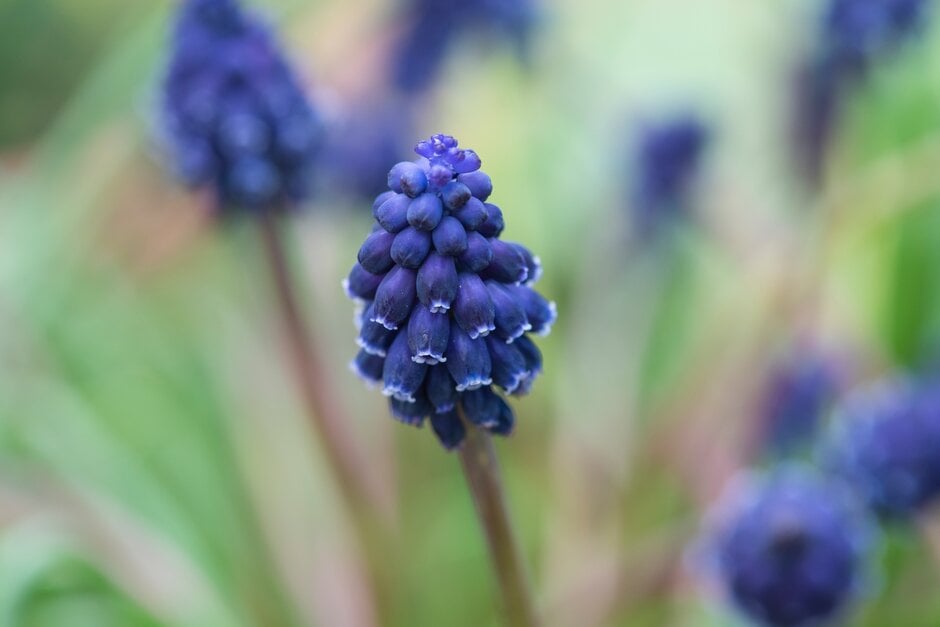Muscari neglectum
common grape hyacinth
A bulbous perennial to 30cm in height, with narrow, arching, green leaves that first appear in autumn, and erect stems bearing dense spikes of egg-shaped flowers up to 7mm in length in spring. The upper flowers are pale to mid-blue and the lower ones deep violet to blackish-blue
Other common names
grape flowerstarch hyacinth
Synonyms
Muscari bucharicumMuscari pulchellum
see moreMuscari racemosum (L.) Medik.
Muscari leucostomum

Buy this plant
Size
Ultimate height
0.1–0.5 metresTime to ultimate height
2–5 yearsUltimate spread
0–0.1 metreGrowing conditions
Moisture
Moist but well–drained, Well–drainedpH
Acid, Alkaline, NeutralColour & scent
| Stem | Flower | Foliage | Fruit | |
| Spring | Black Blue | Green | ||
|---|---|---|---|---|
| Summer | ||||
| Autumn | Green | |||
| Winter | Green |
Position
- Full sun
- Partial shade
Aspect
North–facing or West–facing or South–facing or East–facing
Exposure
Exposed or Sheltered Hardiness
H6Botanical details
- Family
- Asparagaceae
- Native to GB / Ireland
- No
- Foliage
- Deciduous
- Habit
- Tufted
- Potentially harmful
- Ornamental bulbs - not to be eaten. Wear gloves and other protective equipment when handling Pets: Ornamental bulbs - not to be eaten - see the HTA guide to potentially harmful plants for further information and useful contact numbers
- Genus
Muscari are bulbous perennials with linear or strap-shaped leaves and small bell-shaped, tubular or urn-shaped flowers borne in a dense raceme on an erect leafless stem
- Name status
Correct
- Plant range
- Europe to C Asia
How to grow
Cultivation
Plant 10cm deep in autumn in any moderately fertile, well-drained soil. Lift and divide congested clumps when dormant in summer maintain vigour. May be invasive
Propagation
Propagate by seed, sown in autumn, in containers in a cold frame or separate offsets in summer
Suggested planting locations and garden types
- City and courtyard gardens
- Gravel garden
- Patio and container plants
- Wildflower meadow
- Cottage and informal garden
- Rock garden
- Low Maintenance
- Garden edging
- Underplanting of roses and shrubs
- Flower borders and beds
- Ground cover
Pruning
No pruning required; faded foliage may be removed if required
Pests
Generally pest-free
Diseases
May be susceptible to fungal infections including anther smuts and bluebell rust (see rust diseases), and bacterial soft rot and some virus diseases
Love gardening
Sign up to receive regular gardening tips, inspiration, offers and more
View our Privacy Policy
Get involved
The Royal Horticultural Society is the UK’s leading gardening charity. We aim to enrich everyone’s life through plants, and make the UK a greener and more beautiful place.